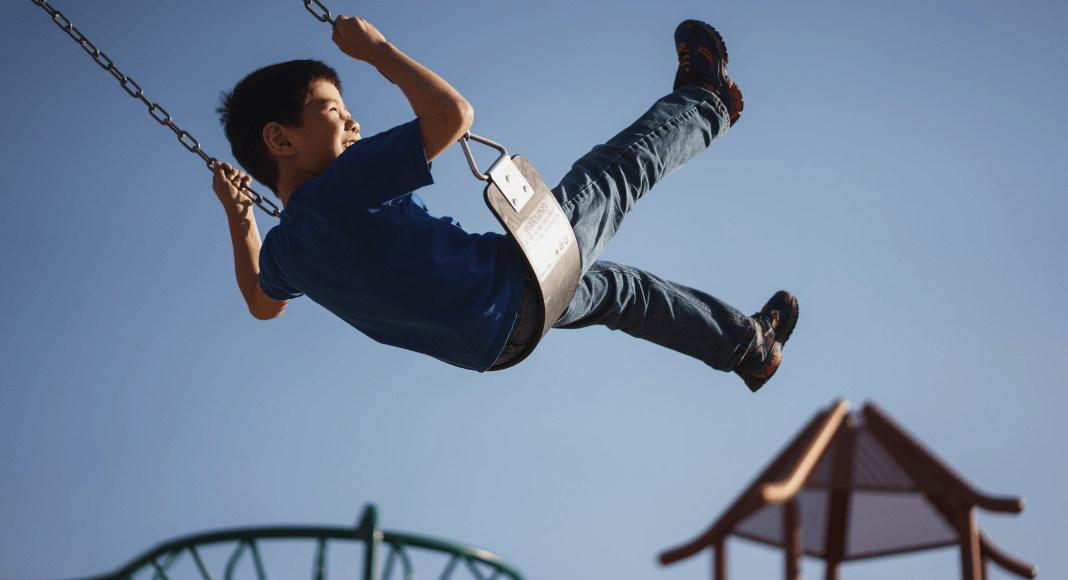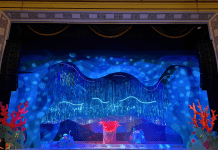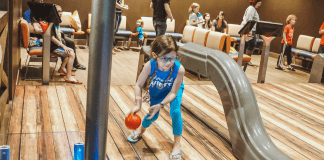Halloween is long over and it’s time to pack away the scary stuff and make room for wholesome family gatherings. I always feel a little sad once Halloween passes, not only because it’s my favorite holiday but because it signifies the beginning of the end of the holidays.
The transition from the season of scare to the season of caring got me thinking.

Are we all now back to our regular routine of daily dread? What makes Halloween so special is that we are given a yearly respite from fearing fear. We celebrate the spooky, the morbid, and the obscure. Now that it’s over, is that what we have to look forward to each November through September? A never-ending barrage of anxieties surrounding our children’s well-being and healthy development? I decided to take a look at how our fears play out in our parenting styles, our choices in play, and the resulting environments we create for our children. What I discovered just might scare you.
Let’s start the discussion with another favorite of mine – history. In the early 1800s, play spaces consisted primarily of sandboxes outside of small homes. The concept was based solely on imaginative play – how the mind of a child can turn a box of sand into a world of creation. It was convenient, cheap, and safe. Playgrounds have existed in the United States for approximately 130 years. When I was a child, materials were still sourced from refurbished metals and woods. Many playgrounds from 1950 to the late 1970s were constructed from salvaged materials. In the late 1970s through the mid-80s, city planners were forced to take a closer look at the safety of playgrounds, not because of an increase in injuries but, rather, because of the growing popularity of related lawsuits. I think most that lived through that era would agree that this was not just an overhaul in playground materials. It was an overhaul in our mindsets as parents. Rather than encourage risk and exploration, we would become good parents through prevention.
The evolution of the playground is a perfect example of good intentions gone wrong. One popular study showed that injuries actually increased when playgrounds were made safer. “Safe” to kids meant less fun and children were more likely to engage in risky behavior to make up for lost amusement. Furthermore, a study by the Consumer Product Safety Commission estimated that in 2008, ERs serviced nearly 220,000 visits related to playground injuries, an increase from their 1999 estimate of 205,000. According to ABC News, a 2009 study out of Winthrop University Hospital in Mineola, New York found that 100% of slide-related fractured tibia bones happened in children who were riding down the slide in the lap of a parent.
Physical injuries aside, spreading fear to our children can negatively impact their creativity, self-soothing abilities, and socialization.
In the years that I worked as a trauma psychologist, I became very familiar with the power that fear has over the brain. Memories that are tied strongly to emotion are more easily stored in long-term memory. Our inner brain, the part of our brain that manages fight or flight, is older and stronger than our frontal lobe, which manages our higher reasoning. Fear is far more likely to override logic than the reverse. Children learn from our behaviors more so than they do our words so if we mimic and exemplify a world of fear, we teach our children that the world is a frightening place. Our intentions to protect them from danger may actually keep them from healthy investigation and lesson learning. And because fear is so powerful, learning lessons of fear can be very difficult to unlearn later in life.
My father told me that they were only two real emotions – fear and love – and that all other emotions stem from them. I would later learn that this is a philosophical standpoint held by many. He also told me there are two kinds of parents – parents who waste their time spending hours talking about the dangers of a hot stove and parents who watch their children touch the glowing metal followed by a consoling, “Hot, ain’t it?” Personally, I don’t think that it always has to be about extremes. I think we as parents have the ability to offer a variety of perspectives and we will always handle things differently as we too learn and grow.
The takeaway from my research into the dangers of our children’s world is this – we can only protect them so much before safety itself becomes dangerous. Remember to allow your children to explore and learn that independence is a strength and not a threat. Provide them with creative play and be conscientious of your own fears.
And by the way, I remember when they took away metal slides. I missed them because plastic slides came with the hidden threat of static electricity. At least with my rusty metal slide, I could see and learn to avoid the danger.












